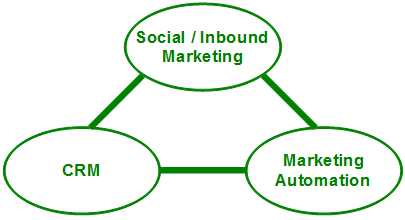 Oracle has just acquired Market2Lead, one of the early Marketing Automation vendors. There has been a lot of talk in the industry about possible consolidation, such as vendors going out of business, becoming irrelevant or being acquired. This is the first transaction involving a major software vendor, so it deserves some notice. Everybody expected Salesforce.com to make a first move, but Oracle surprised us here :- )
Oracle has just acquired Market2Lead, one of the early Marketing Automation vendors. There has been a lot of talk in the industry about possible consolidation, such as vendors going out of business, becoming irrelevant or being acquired. This is the first transaction involving a major software vendor, so it deserves some notice. Everybody expected Salesforce.com to make a first move, but Oracle surprised us here :- )
People asked my opinion on this acquisition. Overall, I think this is great news, for 7 reasons:
1. Market2Lead Probably Got A Good Deal
Market2Lead was one of the early Marketing Automation vendors. Actually in 2006, when I was a marketing manager at a software company in San Francisco, I selected Market2Lead as our Marketing Automation system. But since then too little progress was made: the product was good, but their marketing was lagging behind. The result: not enough new customers. Selling the company to a well-known software company may be a very good outcome for Market2Lead (speculation, I have no inside information on this).
2. Marketing & Sales Belong Together
More and more I’ve come to believe that great marketing initiatives go bad if marketing and sales don’t have a productive relationship. A Marketing Automation system either needs to have great connection to the CRM system, or it should all be integrated. Oracle clearly takes the integrated approach (as they always do), and I believe this is a good move.
3. The Market Needs Consolidation
I publish a list of all Marketing Automation vendors. There are over 30 vendors on this list, which is way too much. There isn’t enough business in this market to support so many vendors. So one fewer vendor – although always sad for the individuals involved – is not a bad thing for the market as a whole.
4. It Puts Marketing Automation On The Map
Most Marketing Automation companies are relatively small. Even industry leaders like Eloqua and Unica are relatively small compared with vendors in more established software categories. This is the first serious Marketing Automation initiative by a major software player. Other CRM vendors claim to do Marketing Automation, but I believe those claims are unsubstantiated. So the Oracle move shows that Marketing Automation is becoming a mainstream solution.
5. Small Installed Base / Few Customers Affected
It seems that Market2Lead is migrating their customers to other solutions, at least, Eloqua’s announcement gives that impression. According to the Oracle’s announcement, only the IP has been acquired, not the company. The fact that the Market2Lead’s installed base is relatively small is a good thing: major disruptions can give a market a bad name, and that’s the last thing Marketing Automation needs.
6. Enterprise-Ready Product
More on a product-level, Oracle is getting their hands on a very feature-rich product. Having done a lot of work with Market2Lead myself, I know first-hand that it’s a very powerful system. This is a good fit with Oracle’s main customer base: mid-size to large companies.
7. Great Technology Fit
There is also a good fit from a technology perspective. The Market2Lead product has been developed using the Java programming language. That is not one of the most hip languages such as PHP or Ruby, but it’s the primary technology at Oracle. Oracle has been a Java-company for a long time, and after the Sun acquisition they also own the Java technology itself. It should be reasonably easy to integrate Market2Lead code in Oracle applications.
My Take On This Deal
I think this deal signals the beginning of a 3-5 year long consolidation process in the Marketing Automation industry. The winners will have tied their applications into other vital marketing and sales processes, either through integration or through acquisition. So my advice for marketing practitioners is to hedge your bets: your Marketing Automation vendor may not be around anymore in a couple of years.


 Do you want to nurture new leads, existing leads or both?
Do you want to nurture new leads, existing leads or both?